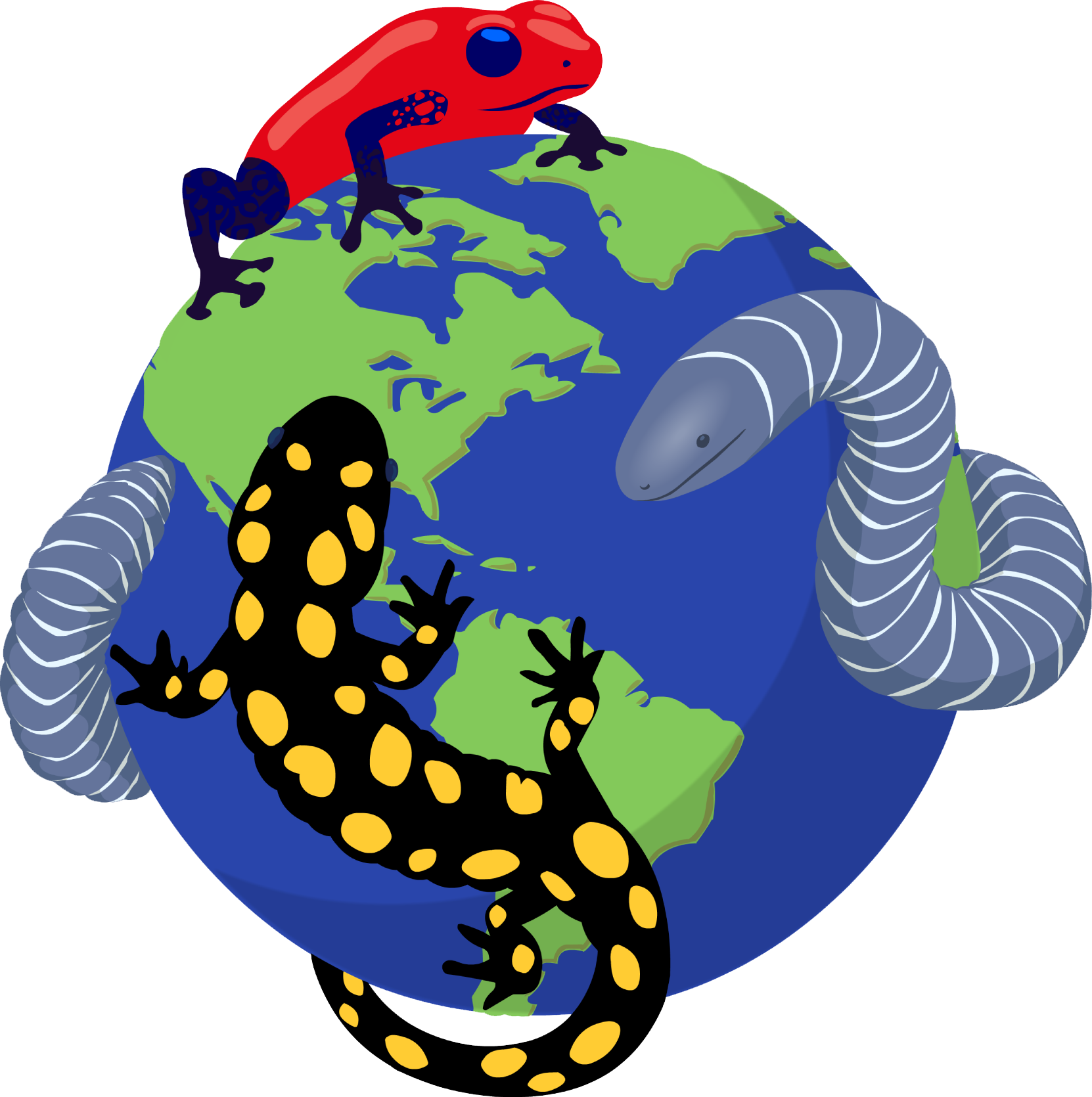|
Allobates talamancae (Cope, 1875)
Striped Rocket Frog | family: Aromobatidae genus: Allobates |
 © 2013 Dennis Kollarits (1 of 34) |
|
|
|
Description This frog has a chocolate-brown back and light-colored body. A dark band runs along each side of the body and head, and two white stripes run along the top and bottom of the dark band. Barring is present on the thighs and calves.Allobates talamancae is sexually dimorphic in coloration: males have black throats and chests, while the throat and venter are white, cream, or yellow in females. (Savage 2002; Leenders 2001). The larvae of A. talamancae are relatively small, growing to 12 mm in length. The tails are long with low fins and bluntly pointed tail tips. In this species, the oral disc is small and emarginate, with beaks and 2/3 denticle rows present. There is a broad gap in the A2 row of denticles above the mouth, and the row of marginal papillae above the mouth is also interrupted. Tadpoles are dark brown on the dorsal side, slightly lighter on the underside, and light brown on the tail. The tail fins and musculature bear dark blotches. (Savage 2002). Distribution and Habitat Country distribution from AmphibiaWeb's database: Colombia, Costa Rica, Ecuador, Panama
Life History, Abundance, Activity, and Special Behaviors Male Striped Rocket Frogs make a rapid, high pitched trill, with a pause before the fourth beat: peet-peet-peet-peet (Leenders 2001). The series is repeated eight to twenty times (Savage 2002), at 10-20 second intervals (Leenders 2001). The males call during the day from the forest floor (Savage 2002). They prefer to call during periods of low light, usually while sitting on the leaf litter (Savage 2002). However, it is the female in this species who is territorial and actively defends the territory (Leenders 2001). Allobates talamancae displays parental behavior similar to that of frogs in the genus Phyllobates (Leenders 2001). Mating takes place in the leaf litter (Savage 2002). Females deposit their eggs in moist leaf litter, where early development occurs (Savage 2002). Tadpoles are transported to water on the back of either parent, in clutch groups of 8-29 tadpoles (Savage 2002). The adult diet consists of a variety of small arthropods, including ants (Savage 2002). Trends and Threats Comments A Spanish-language species account can be found at the website of Instituto Nacional de Biodiversidad (INBio).
References
Bogart, J. P. (1991). ''The influence of life history on karyotypic evolution in frogs.'' Amphibian Cytogenetics and Evolution. D.M. Green and S.K. Sessions, eds., Academic Press, San Diego, 233-258. Leenders, T. (2001). A Guide to Amphibians And Reptiles of Costa Rica. Zona Tropical, Miami. Savage, J. M. (2002). The Amphibians and Reptiles of Costa Rica:a herpetofauna between two continents, between two seas. University of Chicago Press, Chicago, Illinois, USA and London. Originally submitted by: Peera Chantasirivisal (first posted 2005-11-01) Edited by: Kellie Whittaker (2009-11-02) Species Account Citation: AmphibiaWeb 2009 Allobates talamancae: Striped Rocket Frog <https://amphibiaweb.org/species/1614> University of California, Berkeley, CA, USA. Accessed Dec 16, 2024.
Feedback or comments about this page.
Citation: AmphibiaWeb. 2024. <https://amphibiaweb.org> University of California, Berkeley, CA, USA. Accessed 16 Dec 2024. AmphibiaWeb's policy on data use. |




 Map of Life
Map of Life